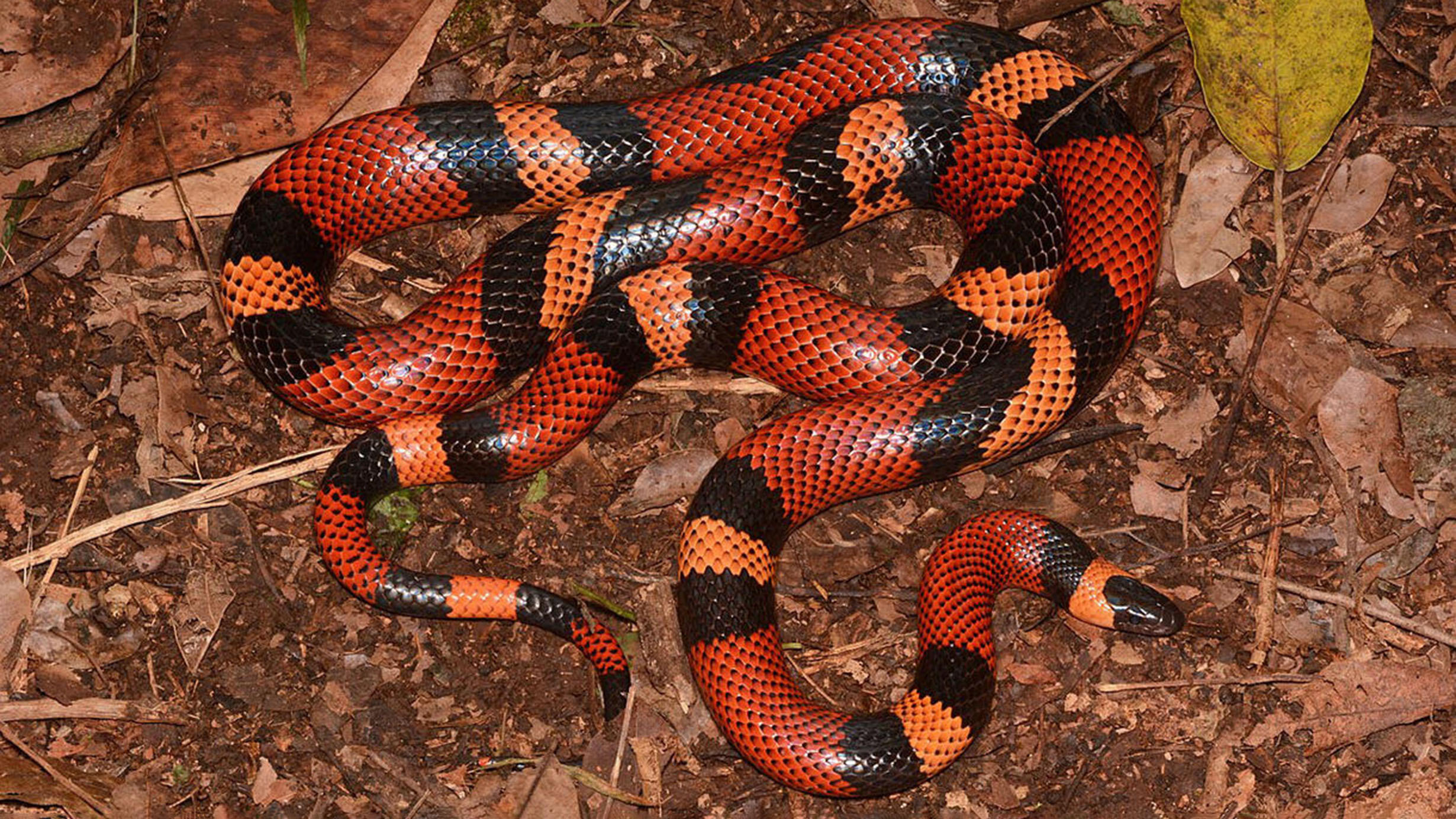Mimicry of Toxic Species May Encourage Predation in Long Run, Study Suggests
by AMNH on
by AMNH on
 Non-venomous milksnakes (Lampropeltis) are often mistaken for venomous coral snakes (Micrurus), in a predator avoidance pattern known as Batesian mimicry.
Non-venomous milksnakes (Lampropeltis) are often mistaken for venomous coral snakes (Micrurus), in a predator avoidance pattern known as Batesian mimicry.Batesian mimicry—when a non-toxic species takes on the physical traits of a dangerous or bad-tasting species—allows an organism to protect itself by fooling predators, at least some of the time. Observed in insects and reptiles, among other organisms, it involves three parties: a “model,” which is toxic or venomous; a "mimic" that evolves similarity to the model to avoid predation; and a predator, which tends to avoid eating the models and their look-alikes.
A new study published in this month’s Biological Journal of the Linnean Society by Museum researchers proposes a feedback model that offers fresh insight into Batesian mimicry. The authors identify an overlooked link between the mimic and the predator: when a predator eats a non-toxic mimic and doesn’t die or get sick, it will also prey on the toxic species, which drives the evolution of more toxicity, and sometimes improved mimicry.
“Our research is based on the idea that mutualistic processes—interactions between species that benefit all parties—could drive mimicry,” said David Kizirian, curatorial associate in the Museum’s Department of Herpetology and lead investigator on the study. “This allowed us to address some longstanding questions, including the accelerated evolution of species involved in mimicry and why some mimics don't look exactly like their models.”
The research team also included Nicole Povelikin, a participant in the Museum’s Science Research Mentoring Program (SRMP), in which high school students conduct authentic research with Museum scientists. After assisting Kizirian in the study of an undescribed species of lizard from Venezuela in 2019-2020 as a high school junior, Povelikin joined the mimicry project in 2021.
“Working on the mimicry project taught me fundamental research skills and introduced me to the importance of theory in the world of science,” said Povelikin, who currently majors in biology with a focus on ecology and evolution at Florida State University. “Most importantly, SRMP taught me that scientists are ordinary people. Any one of us can be a scientist with determination, hard work, and support from our colleagues.”
At FSU, Povelikin founded the university’s first-ever undergraduate herpetology society and was honored with the 2023 Barry Goldwater Scholarship and Excellence in Education Foundation for sophomores and juniors who intend to pursue research careers in the natural sciences, mathematics, and engineering fields. “SRMP gave me the confidence to pursue a career in herpetological and evolutionary research, and the scientists I met at the Museum continue to mentor me on this journey,” she said.